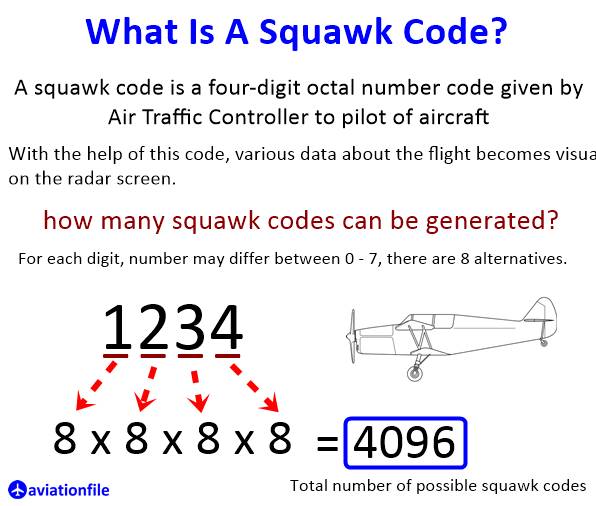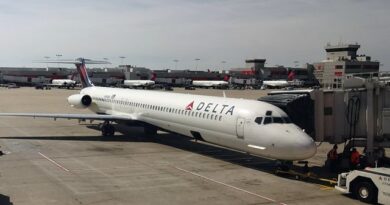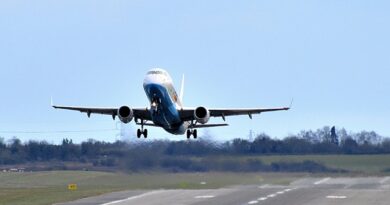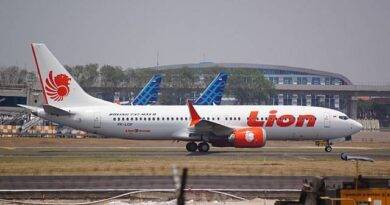The Essential Guide to Squawk Code in Aviation: What They Are and Why They Matter
In the intricate world of aviation, communication between aircraft and air traffic control (ATC) is vital to ensuring safe flights. One key component of this communication system is the use of squawk code—four-digit octal codes transmitted by an aircraft’s transponder. These codes serve as an aircraft’s unique identifier on ATC radar screens and play a crucial role in flight tracking, situational awareness, and emergency management.
What is a Squawk Code?
A squawk code is a four-digit code, ranging from 0000 to 7777, assigned to an aircraft by ATC. The pilot manually enters the code into the aircraft’s transponder, which communicates with ground radar. The transponder then transmits the squawk code, along with other information such as altitude, to ATC. This allows controllers to monitor the aircraft’s position, heading, and flight status (CAU, AviaTech Channel).

The Origin of Squawk Codes
The term “squawk” dates back to World War II when transponders were first developed under the Identification Friend or Foe (IFF) system. These early devices helped differentiate between friendly and enemy aircraft. Because the transponders continuously broadcast signals, they earned the nickname “Parrots,” which eventually led to the use of the term “squawk” for the codes transmitted (High Sky Flying).
Standard and Emergency Squawk Codes
The most commonly known squawk codes include those that signify emergency situations. These codes are standardized globally, ensuring that ATC can recognize emergencies instantly, regardless of language barriers (AviaTech Channel, High Sky Flying):
- 7500: Indicates a hijacking or unlawful interference. When this code is entered, ATC takes immediate security precautions and monitors the flight closely. If confirmed, military escorts may be deployed.
- 7600: Signals a radio communication failure. In this situation, ATC will switch to visual signals or other non-radio methods to guide the aircraft to safety.
- 7700: Declares a general emergency. This could include anything from mechanical failures to medical emergencies, allowing the aircraft to receive priority attention from ATC.
How Squawk Codes Enhance Flight Safety
Squawk codes are a cornerstone of modern air traffic management. These codes allow ATC to distinguish between aircraft even in crowded airspace, helping prevent mid-air collisions and ensuring that each flight maintains a safe altitude and heading (From the Flight Deck: FlightAware Blog, CAU). In normal operations, each aircraft is assigned a unique squawk code, but the system becomes particularly crucial during emergencies.
For instance, squawking 7700 not only alerts ATC but also broadcasts to other aircraft in the vicinity that an emergency is underway, prompting them to keep their distance (AviaTech Channel). This immediate response helps clear airspace for emergency landings or other necessary maneuvers.
Special Squawk Codes
Beyond emergencies, squawk codes are also used for routine flight operations. For example, the code 1200 in the United States signifies that an aircraft is operating under Visual Flight Rules (VFR) and is not receiving direct ATC guidance (High Sky Flying).
Different regions around the world have similar codes that serve various operational purposes, such as 7000 in Europe for VFR flights
(From the Flight Deck: FlightAware Blog).
Avoiding Squawk Code Mistakes
Given the importance of squawk codes, pilots are trained to be meticulous when entering them into the transponder. Incorrectly inputting a squawk code can lead to unintended consequences. For example, mistakenly squawking 7500 could trigger a hijacking response, potentially causing a serious disruption to both the flight and security agencies (CAU).
Example of pilot-controller communication as follows;
- Pilot: ABA Delivery, XYZ123 request ATC clearance.
- ATC: XYZ123, ABA Delivery ATC clears you to destination EDDD via flight plan route, climb FL 240, squawk 2561.
- Pilot: Reads back the ATC instructions…
In this example, with the “squawk 2561” instruction, the 4-digit code requested from the pilot is set to the relevant place on the plane.
Thanks to this code set on the aircraft, information such as speed, altitude, flight number of the aircraft during the flight become visible on the radar screen. In this way, Controllers can provide separation between aircraft and a safe and secure air traffic flow is ensured.
Conclusion
Squawk codes play a key role in aviation safety. They allow pilots and air traffic control to communicate clearly and quickly. This is especially important during critical situations. Pilots use four-digit codes to ensure smooth operations and emergency responses. These codes help manage aircraft and guide them safely through the skies. As air travel evolves, squawk codes continue to prove their value. Their effectiveness remains vital in keeping aviation safe for everyone involved.
By understanding the function and significance of squawk codes, pilots and aviation enthusiasts alike can better appreciate the complexity of air traffic management, and how these simple four-digit numbers play a crucial role in keeping our skies safe.
Resources and Further Reading:
- https://www.dictionary.com/browse/squawk
- ICAO doc4444


